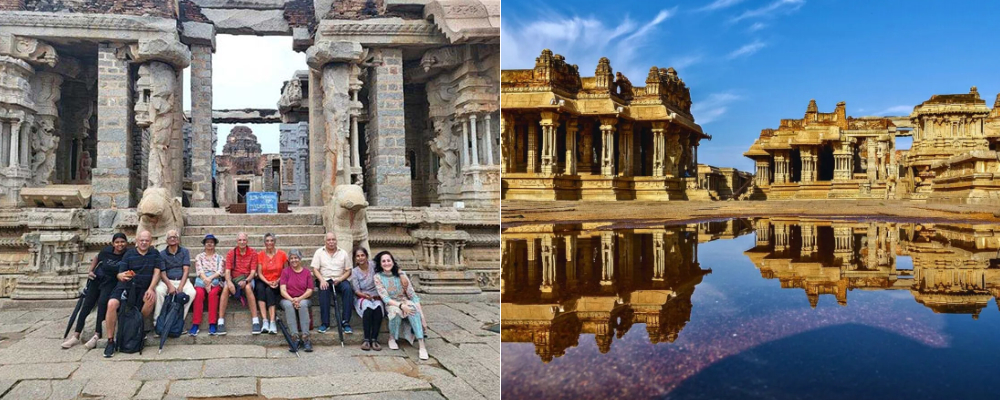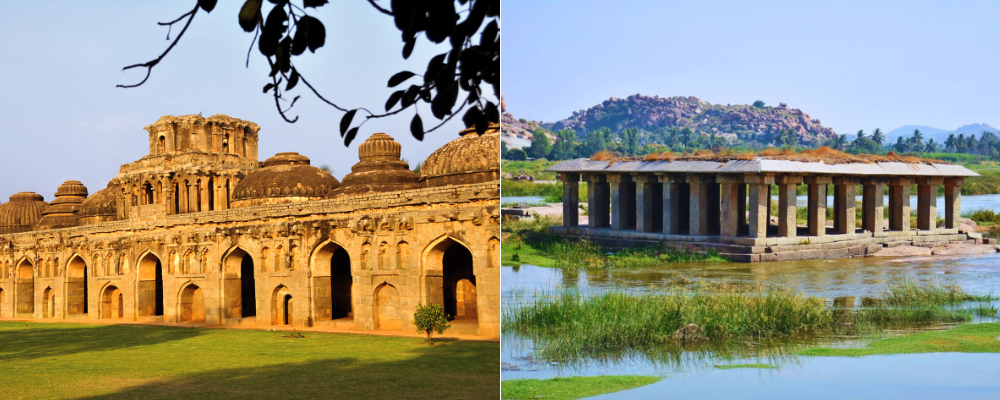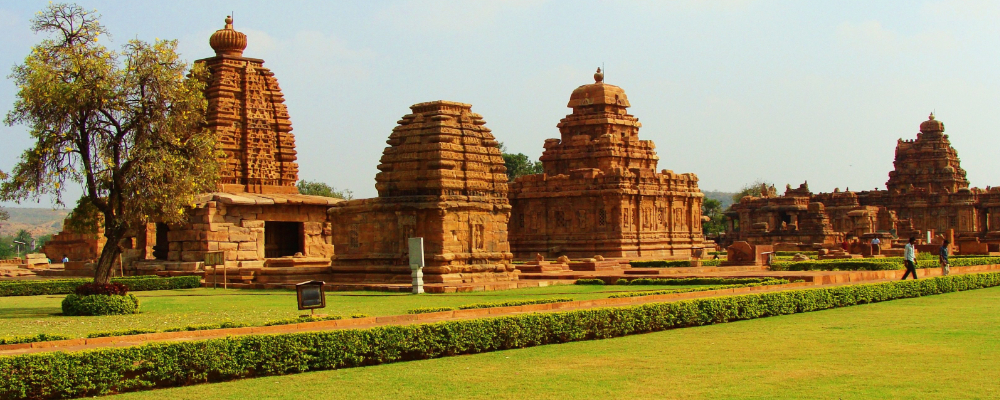Nestled in central Karnataka, the monuments in and around Hampi are testaments to the grandeur of the Vijayanagara Empire. As a UNESCO World Heritage Site, Hampi's architectural and cultural heritage remains largely intact and is actively conserved. Picture towering stone chariots, intricately carved temples, ancient pavilions, and more scattered atop boulder-strewn hills. The presence of the Tungabhadra River adds to the site’s natural beauty. It’s the ideal holiday destination for travelers who love culture, architecture, and a touch of adventure. Here’s a glimpse of what to expect from a holiday in Hampi.
Hampi’s Must-See Monuments
While the earliest recorded mentions of Hampi date back to the 3rd century BC, most of the monuments standing were built much later. Most tours in Hampi begin at the 7th century Virupaksha Temple. Apart from its towering gopuram, the shrine is recognized as one of the oldest functioning temples in India; you can see centuries-old rituals still in practice today.
A short distance away, the Vijaya Vittala Temple Complex stuns with its exquisite architecture and 56 musical pillars. Carved from a single slab of granite, the iconic Stone Chariot also stands within this temple complex. You’ll recognize this Dravidian-style chariot from the new Rs 50 currency notes.

As you go further south, you’ll come to the ruins of the fortified Royal Enclosure. This once served as the Vijayanagara Empire’s administrative core as well as the royal residence. The 12m tall Mahanavami Dibba and the Stepped Tank are the most impressive structures standing today. You can also wander through the Zenana Enclosure, Durbar Hall, and Elephant Stables. While the temples were built in stone, the palaces were largely constructed from wood. Unfortunately, these were burnt down over the years, and today, the stone foundations are all that remain of these structures.
Yet another cluster of monuments stands on the Hemkuta Hill. The hill is home to over 30 small temples, many of which predate the Vijayanagara Empire. The simple architectural styles are a striking contrast to Hampi’s grander structures. Apart from its historical significance, the hill is also worth climbing up for its panoramic views.
The Other Side of the Tungabhadra
Just across the Tungabhadra River north of Hampi’s monuments lies the quieter yet equally captivating Anegundi. According to local legends, it was once part of the mythical kingdom of Kishkinda from the Ramayana. The Anegundi Fort, Gagan Mahal, and Onake Kindi Cave Paintings are the most visited sites here.

What’s more exciting is the Coracle Ride connecting Hampi and Anegundi. These round, bowl-shaped boats, crafted from woven bamboo, are a traditional mode of transport in South India and add a sense of adventure to your journey.
Beyond its historical sites, Anegundi also champions sustainable tourism. Local women working in the Anegundi banana fibre workshops transform this natural fiber into a variety of products ranging from bags and baskets to picture frames and hats. They’re great souvenirs for this holiday.
Nearby Gems with More to See
While Hampi is known for its heritage, the nearby towns of Aihole, Badami, and Pattadakal have their own stories to tell. These historically rich sites lie just a short drive away from Hampi.
Aihole is often referred to as the "Cradle of Indian Temple Architecture". Over 120 ancient Buddhist, Hindu, and Jain monuments are scattered across the site. While some follow the early Chalukyan style of architecture, others follow the later Dravidian and Nagara styles.

A short drive will bring you to the small town of Pattadakal. This UNESCO World Heritage Site was once the royal coronation site of the Chalukyan kings. Pattadakal’s Hindu and Jain temples showcase a harmonious blend of Nagara- North Indian and Dravida -South Indian architectural styles. Of these, the Virupaksha Temple and Mallikarjuna Temple are the most significant.
As you go a little further, you’ll come to Badami and its impressive cave temples cut out of red sandstone cliffs. Built between the 4th and 8th centuries, these temples feature breathtaking sculptures and intricate carvings. Getting to most of these caves does involve a short climb, but the beauty of the temples and the scenic views of Agastya Lake make it effort well spent.
Booking A Tour to Experience Hampi’s Medieval Majesty
Be it the grandeur of its heritage or the beauty of its temples, Hampi promises something special for every traveller. It’s relatively easy to get to with Hubli and Bengaluru being the closest airports. However, once you arrive, getting around can be a bit tricky. Public transport is limited, and navigating the spread-out sites on your own may not be easy. Without local insights, you might also miss out on unique cultural experiences.
The easiest way to make your Hampi holiday unforgettable - Sign up for Odyssey’s Grandeur of Hampi tour. Spread over 6 days, it covers not just Hampi’s iconic monuments but also nearby gems like Anegundi, Badami, and Pattadakal. Along the way, you’ll stay in restored Chalukyan homes, enjoy traditional music and meals, and explore ancient ruins with a passionate historian by your side. This isn’t just a sightseeing trip-it’s your chance to experience the true soul of Hampi. Give us a call to know more.